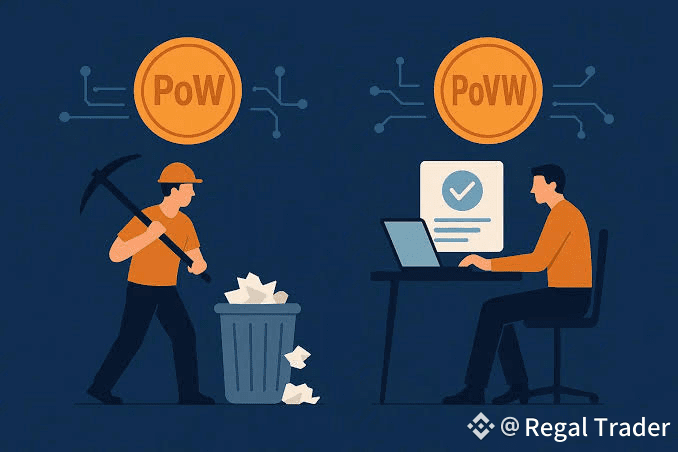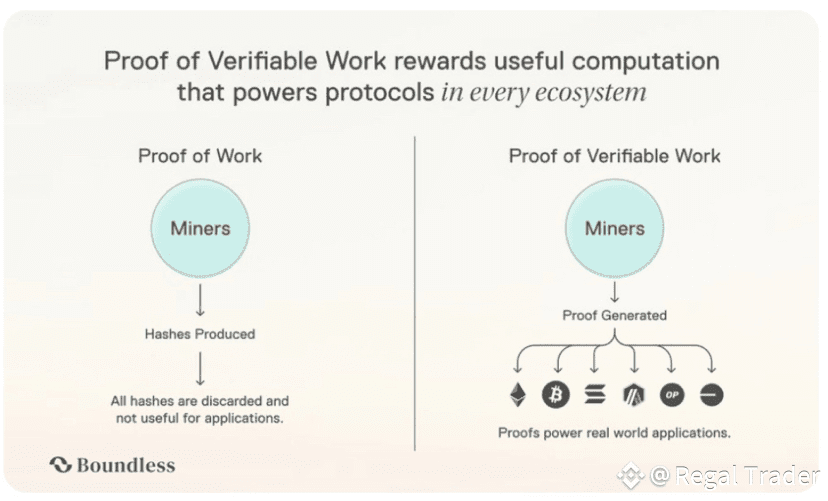I. Introduction: The Emergence of the Verification Crisis
With the move to modular blockchain architecture that involves separating execution, consensus, and data availability, a new bottleneck has emerged: Proof Generation. In a world where rollups and application-specific chains are increasing, and thereby demanding Zero-Knowledge (ZK) proofs to ensure data integrity, the means for producing and verifying these proofs is still disjointed, costly, and heavy in terms of computation.
Boundless (the infrastructure layer with a general-purpose Zero-Knowledge Virtual Machine (zkVM) as its core, by RISC Zero, and the subject of your request) was introduced as a solution to this problem. Boundless is not another blockchain but the basis of what we refer to as the Universal Verification Grid: a decentralized, chain-agnostic marketplace for on-demand generation and verification of cryptographic proofs. It is a radical shift in the paradigm that sees verifiable computation not as a feature of one chain but as a publicly available resource for everyone.
II. Core Technology: The General-Purpose zkVM and the Decoupling of Compute
One of the ways in which Boundless is technically more advanced is its move to a single system for verification rather than multiple siloed systems, like the ones used for specialized zkEVMs.
The RISC-V zkVM Foundation
Boundless uses RISC Zero's zkVM, which is based on the open-source RISC-V instruction set. This point is very important both for the professional side and for the aspect of being up-to-date. While zkEVMs have to be compatible with Ethereum Virtual Machine (EVM) and limit their operations accordingly, a general-purpose zkVM gives developers the liberty to use standard and efficient languages such as Rust, or C++ for writing their code.
The Value Proposition:
1. Unlimited Execution: Developers get the liberty of transferring the executions of any complicated calculations, be it AI inference, large-scale data queries, or complex financial modeling, to off-chain.
2. On-Chain Integrity: After that, the off-chain program's correct execution is attested by the zkVM in the form of a very short, crypto receipt (ZK proof). This receipt is then very simply checked in any target blockchain thus trust is maintained without help of the expensive re-run of the whole processing.
What this technology does is very effectively separate the actual work (doing it off-chain by specialized provers) from verification (the latter being done cheaply and securely on-chain).
III. Creative Innovation: Proof of Verifiable Work (PoVW) and the Prover Market
In order to make this Verification Grid decentralized and secure, Boundless came up with a novel, goal-oriented way of coming to an agreement: Proof of Verifiable Work (PoVW). It is a significant creative and professional leap over traditional Proof-of-Work (PoW) systems.
Incentivizing Useful Computation
PoVW changes the economics of ZK proving:
• Prover Marketplace: Blockchains, rollups, and dApps submit "proof jobs" (computation requests) to the Boundless network.
• Decentralized Provers: Independent nodes, which are usually outfitted with powerful GPUs, thus compete in performing the computation inside the zkVM and consequently generating the proof.
• Staking and Slashing: Provers are required to stake Boundless's native token ($ZKC) on their side as security, which can be cut for the wrongdoings or fraudulent proof productions, thus being an assurance of the system's economic safety.
• Rewarding Utility: As opposed to PoW which rewards arbitrary hashing, PoVW rewards provers per actual number of computational cycles (teracycles) they have done and the complexity level of the valid proof submitted. Thus a meritocratic system emerges where utility is the main economic engine.
Boundless achieves censorship resistance, strong liveness, and dynamic pricing, sometimes bringing the median proof cost close to zero during beta periods, by creating a market-driven and competitive environment for proof generation.
IV. Conclusion: The Backbone of the Modular Future
By employing PoVW and adopting a chain-agnostic strategy, Boundless is compatible with the modular evolutionary path and can be considered as a base or foundational layer.
Cross-Ecosystem Composability
It could also tap the zk potential of the different ecosystems in a very smooth way like, for example, Ethereum L1/L2s, Bitcoin (via apps like Citrea), Solana, and Cosmos SDK chains. Such universal compatibility not only standardizes the verification process but also dramatically eases the developer experience and thus real cross-chain interoperability becomes possible.
Boundless goes beyond being a mere enhancement of already available ZK infrastructures to being an entirely new category. By moving the industry's spotlight from the execution of individual chains to a universal, market-driven verification grid, Boundless offers the necessary backbone that is scalable, cost-efficient, and secure to make the internet-scale vision of Web3 a reality. Its return is likely to be gauged not by the performance of a single chain but by the security and scalability that it extends to every chain it links.
